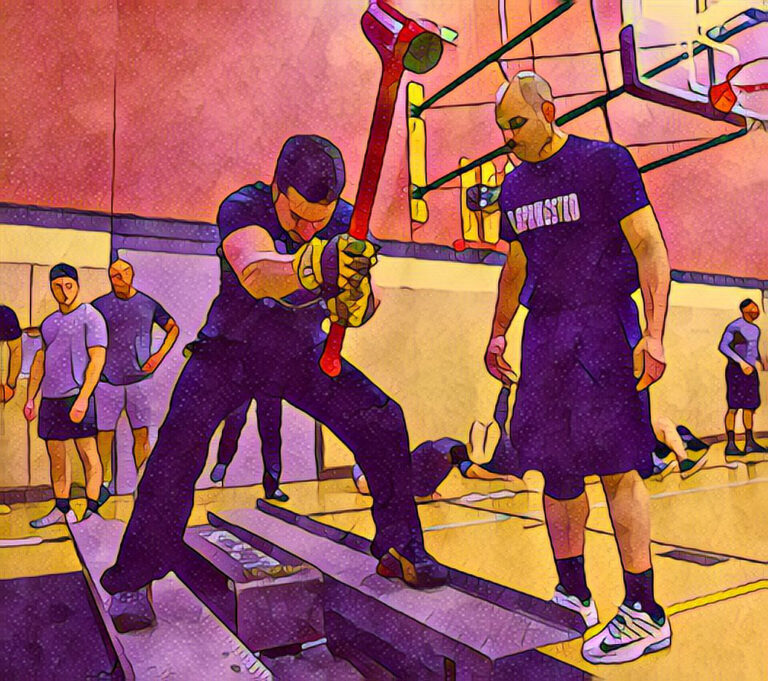Physical Fitness for Firefighting and SAR
When it comes to outdoor athletes and professionals, physical fitness is not a one-size-fits-all concept. For those in high-stakes roles like firefighting and search and rescue (SAR), fitness is tailored to the specific physical and mental demands of their jobs. From carrying heavy equipment across rugged terrains to navigating life-threatening situations with agility and strength, the physical and mental preparation of these individuals ensures their effectiveness and safety on the job.
Tailored Fitness for High-Stakes Professions
Firefighters
Firefighters face unique physical demands that go beyond general strength and endurance. They must possess:
- Functional Strength: For carrying heavy gear and rescue equipment.
- Agility: To move swiftly through narrow, hazardous spaces.
- Balance and Flexibility: For climbing ladders and navigating unstable structures.
Firefighters often engage in task-specific training, such as crawling through confined spaces, carrying casualties, or scaling ladders, ensuring they are ready for the unpredictable nature of their work.
Search and Rescue (SAR) Professionals
SAR team members operate in challenging environments, including mountains, forests, and disaster-stricken areas. Their fitness needs include:
- Endurance: For long-distance hikes with heavy packs.
- Strength: To transport equipment and rescue victims.
- Mental Toughness: To perform under pressure in life-or-death scenarios.
Their training involves not only physical preparation but also scenario-based drills that mimic real-world challenges.
Key Fitness Elements for Success
- Cardiovascular Endurance
- Essential for prolonged operations such as battling fires or extensive search missions.
- Helps individuals maintain stamina and reduce fatigue during extended periods of exertion.
- Training methods include interval runs, cycling, and stair climbing to build endurance specific to job requirements.
- Strength and Muscular Endurance
- Necessary for carrying heavy equipment and victims.
- Sustained muscular endurance ensures efficiency in prolonged tasks like hauling tools or climbing.
- Functional strength training, including weighted carries and resistance exercises, is integral to preparation.
- Flexibility and Mobility
- Critical for injury prevention and performing tasks requiring a wide range of motion, like crawling through debris or climbing through tight spaces.
- Stretching routines and mobility drills are incorporated into training programs to enhance flexibility.
- Mental Toughness
- Enables focus and decision-making in high-stress situations.
- Builds resilience to push through physically and emotionally demanding scenarios.
- Mental preparation includes stress management workshops and mindfulness exercises.
Training Programs: Preparing for Real-World Challenges
Both firefighters and SAR professionals undergo rigorous, job-specific training programs designed to replicate the physical and mental challenges of their roles. These programs typically include:
- Scenario-Based Drills: Simulating real-world rescue situations to improve decision-making and teamwork.
- Strength and Cardio Workouts: Tailored to the demands of climbing, carrying, and navigating challenging environments.
- Flexibility and Recovery Sessions: To ensure readiness and prevent injuries.
- Mental Resilience Training: To foster confidence and composure under pressure.
The Value of Fitness in Emergency Services
The fitness of firefighters and SAR professionals is not just a personal commitment; it’s a public safety imperative. Their ability to respond effectively depends on their physical and mental readiness. Beyond technical expertise, their endurance, strength, and resilience allow them to face the unpredictable challenges of their work head-on.
Conclusion: Fitness Saves Lives
For those considering careers in firefighting or search and rescue, physical fitness is more than a requirement—it’s a cornerstone of success. Whether it’s climbing through tight spaces or carrying heavy loads over rugged terrain, the right combination of strength, endurance, flexibility, and mental fortitude ensures these professionals can perform at their best.
By prioritizing fitness, these heroes not only safeguard their well-being but also enhance their capacity to save lives. If you’re aspiring to join these ranks, prepare to put your fitness to the test and embrace the rewarding challenge of being ready when it matters most.









